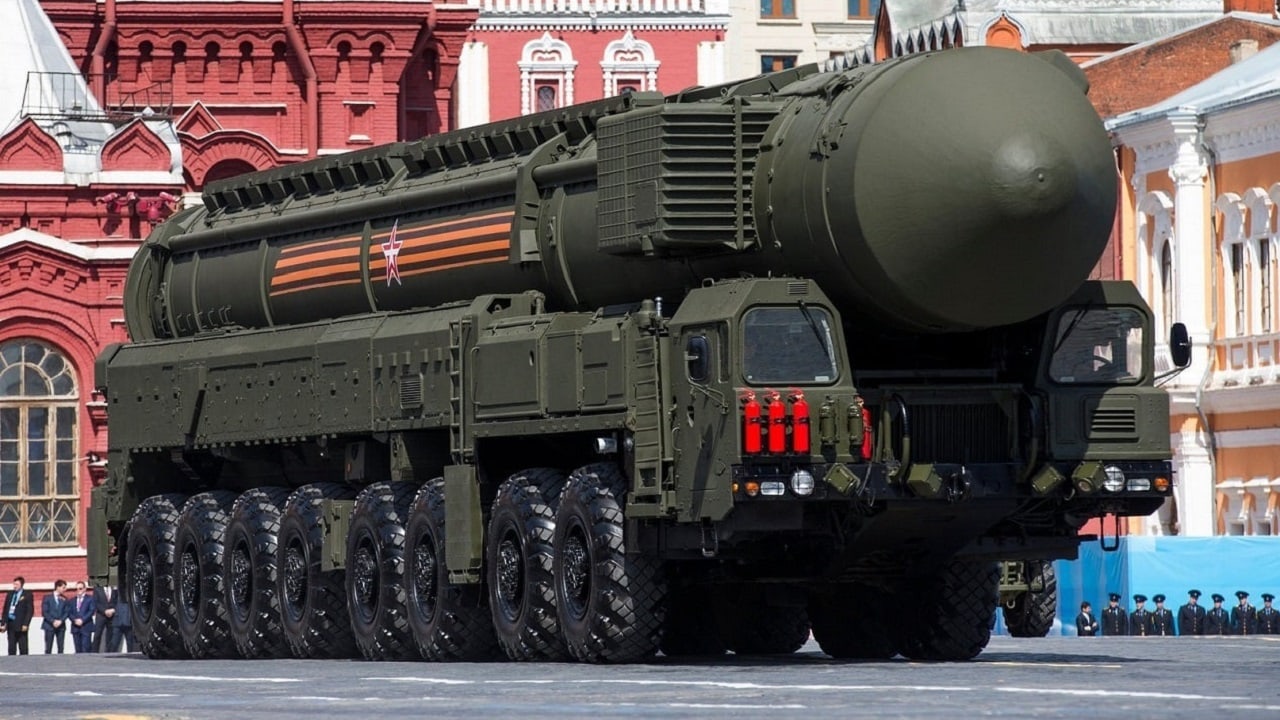What if Ukraine still had Soviet nuclear weapons? One prominent narrative that emerged as Russia initiated its reprehensible invasion of Ukraine centered on Ukraine’s decision to give up the nuclear weapons left on its territory after the Soviet Union collapsed. If only Ukraine had kept these nuclear weapons, the argument goes, it could have deterred Russia from invading. This perspective emphasizes nuclear weapons as the ultimate insurance policy against invasion but underplays important details and the historical context around Ukraine’s decision.
Ukraine became the world’s third‐largest nuclear power almost overnight in 1991 as it declared independence and the Soviet Union collapsed. The Soviet military stationed approximately 1,800 strategic and some 4,000 tactical nuclear weapons on Ukrainian territory.
The question of what to do with this massive arsenal quickly became a top priority of Ukraine, Russia, and the United States. Newly independent Ukraine was eager to join the international community, Russia was trying to limit the damage of the dissolution of the Soviet Union, and the United States was worried about the security of nuclear weapons as Russia and former Soviet republics faced intense political and economic challenges.
Although Ukraine had thousands of nuclear weapons stationed on its territory, these weapons did not really belong to Ukraine. Command and control is a core feature of an effective nuclear deterrent, but Kyiv did not have it. According to the official history written by the U.S. Defense Threat Reduction Agency, “The preplanned launch codes remained in the rocket army’s underground command and control centers…No one denied that authority to launch the nuclear forces, the third largest in the world, remained in Moscow.”
In other words, Russia retained effective command and control over the nuclear weapons on Ukrainian territory. Ukraine could not launch the missiles or use the warheads, and therefore the arsenal could not be used as a deterrent. Moreover, even if Ukraine did obtain command and control, it did not have the infrastructure to safely maintain the weapons.
Given these operational and technical limitations, the nuclear weapons in Ukrainian territory could simply not serve as an effective deterrent. They were, however, a valuable bargaining chip. Ukraine could not use the weapons, but it could trade them for other benefits.
Ukraine’s government recognized this and shortly after independence agreed to give up the nuclear weapons in order to join international agreements such as the Strategic Arms Reduction Treaty and the Nonproliferation Treaty (NPT). Surrendering the nuclear weapons also provided an avenue for improving Ukraine’s relationship with the United States as the latter started a cooperative threat reduction program to secure nuclear material in the former Soviet Union. Ukraine was also facing an economic crisis in the early 1990s, experiencing hyperinflation and a significant amount of GDP contraction. Simply stated, Ukraine had more to gain by getting rid of the nuclear weapons than keeping them.
While there were clear benefits to trading away the nuclear weapons on Ukraine’s territory, Kyiv was wary of Moscow and did not want to give up the weapons for free. In January 1994, Ukraine, the United States, and Russia agreed to a trilateral statement. In exchange for written security guarantees, $2.5 billion in debt forgiveness, U.S. support for cooperative threat reduction, and nuclear fuel assemblies for its nuclear power plants, Ukraine agreed to transfer all nuclear weapons out of its territory and join the NPT. At the end of that year the written security guarantees were formalized in the Budapest Memorandum, which included respect for Ukraine’s territorial integrity and sovereignty. These security guarantees held for 20 years until Russia violated the agreement in 2014 by annexing Crimea.
It is important to note that the Budapest Memorandum, unlike the treaty that established NATO, is not a defense treaty and does not commit the United States to military intervention on Ukraine’s behalf should it be attacked. The memorandum mentions consultations among the parties and with the United Nations Security Council in the event of a conflict, but it does not rise to the level of a defense treaty.
Given the circumstances at the time, Ukraine was right to give up the nuclear forces that the former Soviet Union deployed on its territory. Ukraine possessed neither command and control over the weapons nor the capacity to safely maintain them. Ukraine also reaped significant economic and security benefits by giving up the nuclear weapons, which were vital at the time given the difficult situation that it faced. Russia eventually violated the security guarantees it agreed to in the Budapest Memorandum, but the agreement undergirded two decades of peace between Ukraine and Russia.
Russia’s invasion of Ukraine is a great and senseless tragedy. It is tempting to look to the past for an easy fix that could have prevented this horrible event. However, it is important to not view the past through rose‐tinted glasses. The nuclear weapons left in Ukraine after the collapse of the Soviet Union were a better bargaining chip than a deterrent, and Ukraine reaped tangible economic and security benefits for trading the weapons away.
Eric Gomez is the director of defense policy studies at the Cato Institute. His research focuses on the U.S. military budget and force posture, as well as arms control and nuclear stability issues in East Asia.

